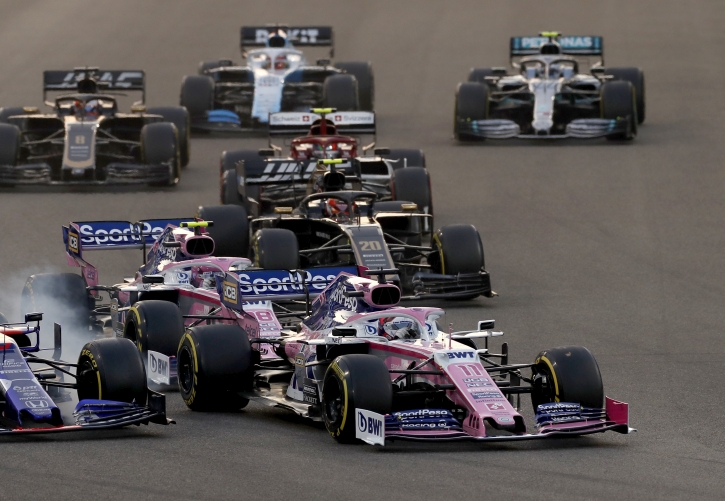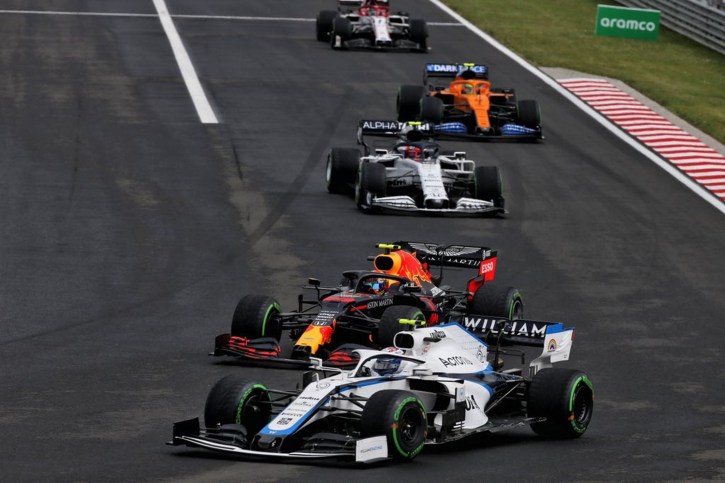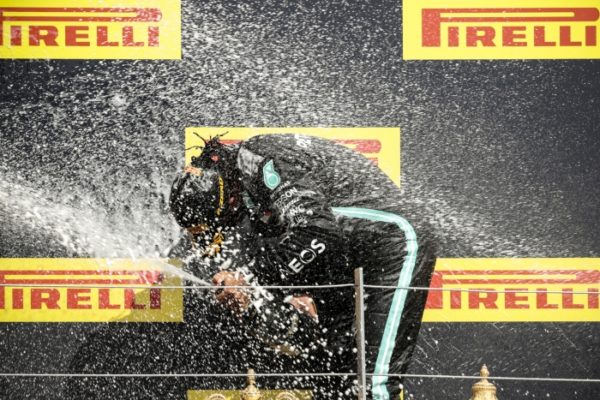Ferrari is the most successful Formula One team of all time, correct? “Yes!” we hear you all shout, “of course!”
Everyone knows the old adage of “there are lies, damned lies, and then there are statistics”. Nowhere is this is more true than in Formula One. Let us look, for instance, at our “most successful team” statement above. It is true: Ferrari, as a team, has won more races, more drivers’ and more constructors’ world championships than any other team. So, statistically, they are the most successful team in Formula One right? Wrong – depending on how you interpret the statistics. Ferrari have spent more years in Formula One than any other team, meaning they’ve had more opportunities in which to collect all their trophies.
Ferrari’s stats
Since the advent of F1, Ferrari has scored 193 race victories, 14 constructors’ championships and 14 drivers’ championships. Those are some figures! Ferrari entered Formula One in the sport’s debut year, 1950, and have raced in 741 races. This means that it took them an average of 4 contested seasons for every drivers’ world championship and 4 contested seasons for every constructors’ world championship they have won. Aside from that, they required 3.8 races for every victory scored.
The competition
Now let us look at the obvious, and perhaps less obvious, competition. Lotus, for instance, would have been a serious contender had it not been for their lean years after the death of one Mr Chapman. As it is, they took 6 drivers’ and 7 constructors’ world championships, contesting an average of 6.8 and 5.8 seasons per championship respectively. Nowhere near Ferrari, but beating a perhaps more obvious contender – Renault.
Renault, who entered the sport in ’77 and was the pioneer of turbo charging in Formula One, has competed in the sport for 15 years (in two stints) and have contested 213 races. This brought the team 2 drivers’ and 2 constructors’ world championships and 33 wins. This means that, for every drivers’ and constructors’ championship they’ve won, they’ve contested 7.5 seasons respectively, and for every race they’ve won, they started almost 6.5.
That leaves us with only two more obvious contenders: McLaren and Williams. McLaren, in their 40 years of racing, have scored 148 wins in 614 races and walked away with 11 drivers’ world championships, not to mention 8 constructors’ world championships. What this means is that it took them only 3.6 years of racing for every driver they brought home to a championship. On that score they are ahead of Ferrari. Where Ferrari beats McLaren though, is in the constructors’ stakes: 5 years they needed for every constructors’ world title. Not bad, but behind Ferrari. In races contested per victory also, they are behind the red team – with a win for every 4.1 races they’ve started.
On to Williams – and this is where it gets interesting. Williams is a relative newcomer if you compare them to Ferrari and McLaren, Sir Frank’s team having only been in the sport for 28 years. In those 28 years they have started 532 races and won 113 of them, raking in 7 drivers’ world titles and 9 constructors’ world titles in the process. For every drivers’ world title they won then, they contested 4 seasons – equaling Ferrari. For every constructors’ title? A mere 3.1 seasons – and that includes the 9 year drought they’ve been having since Newey left at the end of ’97. So, according to these stats, it is Williams that, at this point in time, walks away as the most successful Formula One team in history. These things will change of course – one has but to go back a mere 4 years, for instance, to place Ferrari firmly in third behind McLaren. But we’re dealing with the now here, and for now, Sir Frank can smile gloatingly, despite the terrible season behind him.
What about the drivers?
“Michael Schumacher! The stats prove it!” Yes, stats are the Schumacher supporter’s favourite weapon in any debate – and so it should be. Michael has won more races, more championships and more consecutive championships than anyone else, and he’s helped his team to more constructors’ titles than any other driver. Of course, the Formula One supporter who digs only slightly deeper will cite specific examples of great drives and Michael’s ability to develop a car and set it up like no other. But we’re dealing here with statistics, so we’ll stick to those.
In terms of measuring driver success, we’ll take two figures: Races contested per F1 GP victory, and seasons contested per championship. Michael Schumacher has started a total of 250 F1 Grands Prix in 16 years of competing in the sport. Of those he won 91 and, as every reader of this column should know, he garnered 7 drivers’ championships in the process. Impressive stuff indeed.
So who is the competition? Greats like Senna and Prost, surely. Not to mention Alonso, who has taken two in a row. And how can we forget other legends like Jim Clark, Jackie Stewart and the great comeback-kid, Nikki Lauda?
Oddly enough, Alonso comes very close to Schumacher when one looks at seasons contested per championship taken – at a mere 2.5. In fact, if Alonso takes the 2007 championship, he’d be ahead of the German on this measurement. On races contested for every win though, he is far behind – at nearly 5.9. In the 13 years that Nikki Lauda raced in F1, he raced 172 times, 25 of which he won. He took 3 championships. That pegs him at 4.3 years per championship and almost 6.9 races per victory. A true great, but statistically less impressive than Alonso.
Throwing Prost and Senna into this mix almost seems unfair. After all, who could maintain the best stats when you’re competing against someone like Prost or Senna? These two were definitely each other’s downfall when it comes to stats. For completeness sake, however, they simply must be included. Prost, the great statistical record-holder before Schumacher, raced in F1 for 13 years, contested 202 races, took 4 championships and won 51 times. That gives him a championship per 3.25 seasons and a win per 3.96 races. Senna, with call it 9.5 years, and 162 races under his belt, took 3 championships and 41 wins. That gives him a championship for every 3.2 seasons, and a win rate only marginally better than Prost’s – at 3.95 races per win.
Go back slightly further in time and Jackie Stewart and Jim Clark come into contention. Mr Stewart contested exactly 100 races over 9 years, winning 27 of those races and raking in 3 championships. That means his win and championship rates both beat those of Senna – at 3 years per championship and 3.7 races per win. Jim Clark, who’s career was cut short in a silly F2 race crash, only took 2 championships in his 8 years in the sport, making it a round 4 years per title. He won 25 times in 73 races tough, meaning it took him less than 3 races per win – a feat matched by only two other drivers.
And it is one of those two drivers that I have left for last. When it comes to stats, no-one has managed to beat this man. The Old Man, that is – Juan Manuel Fangio. In his 8 years in the sport, starting with the advent of F1 and ending when he was well into his forties, he raced in 52 races, won 24 of them and brought in 5 championships. This makes him nothing short of a statistical conqueror, who took but 1.6 seasons for every title he won, and 2.2 races for every race victory. No contest there – Fangio was the best.
The bottom line
Is there a point to all this? Other than the fact that it was fun researching this article? Yes there is: Statistics are a great tool when one wishes to compare competitors (drivers or teams, in the case of F1) across a generational divide – competitors, in other words, who never competed against one another directly. They provide concrete figures if one puts them into perspective. They never stand alone however – a mere “most championships won” vs “most championships won per seasons contested” statistic highlights that quite easily. Arguing statistics then, will get you on the losing side if your opposition is better at twisting his stats.
Even from the best of perspectives though, they never tell the full story. You did not see the names Stirling Moss, Graham Hill or Gilles Villeneuve anywhere in this article, did you? Their statistics would have come nowhere near – yet they were all Formula One greats and no true supporter would dare deny that. Looking at Senna and Prost’s stats makes the same point. No other driver could say that they had competition like Prost or Senna throughout their career – and if they did, would their stats be anywhere near Prost or Senna’s? Yet not having the other as competition would have lessened the reputation of either. And what if Senna lived? Would Michael Schumacher’s stats be as impressive as they are? Probably not. Would Senna’s be even more impressive? It is quite likekly.
Stats simply fail to relate the story of a charging Stirling Moss who fought off brilliant drivers in new Ferraris at Monaco to win at the wheel of a four year old Lotus – in the rain. They fail to tell how Senna, at a sopping wet Donington in 1993, overtook Michael Schumacher, Karl Wendlinger, Damon Hill and Alain Prost, all on lap one. They fail to tell how Nikki Lauda, having been told by Bernie Ecclestone that he will never again race a Formula One car competitively after his crash, came back into the sport and took 2 more drivers’ titles. They fail to tell how Mika Hakkinen came back after a crash that resulted in doctors telling him he will never race again, and also took 2 drivers’ titles. They fail to tell the story, the legend, of Formula One.
Edu de Jager
DailyF1News.com
For all the columns by this author, click here





